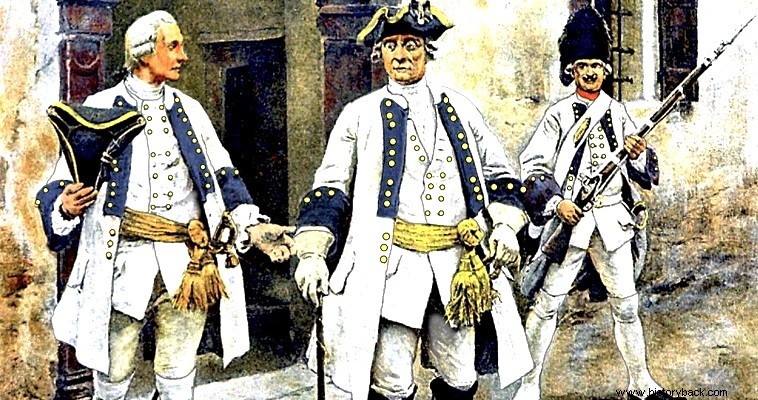
The Battle of Clausen in 1735 (War of the Polish Succession) is a typical example of a conflict where the superior side displays tragic audacity and refuses, in effect, to seriously engage the enemy. On the contrary, it seems to be shaken by a bold counterattack.
In 1735 a powerful French army had invaded Germany and moved towards the region of Trier. In the same area was operating an Austro-German (Imperial) army of 35,000 men under Imperial (Reich) Count General von Zeckendorf . The goal of the Imperials was the expulsion of the French and the recapture of the Moselle region.
After a series of maneuvers and skirmishes in which they prevailed,the Imperials moved towards Clausen. The first Imperial divisions arrived there at 04.00 on the morning of 20 October 1735. The French army under Marshal de Coigny had 50 battalions of infantry and 108 regiments of cavalry, while its commander had detached from the familiar regiments 36 companies of grenadiers forming an elite strike force.
The grenadiers supported by 33 battalions and 68 companies, under Belle Ile, moved towards the village of Esch, while a force of 17 battalions and 40 companies moved towards the village of Rivenich . Near the two villages there were bridges over the Moselle River. The goal of the French was to double overpower their opponents.
Zeckendorf saw the French movements and sent 10 companies of grenadiers to cover the Rivenich bridge. The French attacked and after an exchange of fire, taking advantage of their numerical superiority, they took control of the bridge but did not dare to move in depth. At Esch the French also took possession of the bridge but again moved hesitantly.
So Zeckendorf decided to take advantage of the inactivity of the opposing French commander. Immediately he reinforced with another 5 companies of grenadiers those fighting in Rivenich and ordered an artillery ulama to an excellent position south of Esch, from where his guns could flank the French who will cross the bridge there.
In this way, mainly due to the reluctance of the French marshal, Zackendorff's plan succeeded completely. Hungarian Hussars
De Koigny seeing only the imperial forces approaching his men who had taken over the bridge ordered them to retreat without a fight even though he could reinforce them with overwhelmingly superior enemy forces! Taking advantage of the French marshal's new disastrous failure, Zeckendorf ordered his men to cross the bridge themselves and threaten the French right wing.
The French infantry there panicked and after firing a few misfired volleys began to retreat towards the center of the French formation causing confusion to the units there as well. Upon this de Koigny gave the order for a general retreat. It was an incredible victory. The Imperials had only 45 killed, 93 wounded and 3 missing, while also losing 43 horses. The French lost about 200 men before they fled in disgrace!
The following day, 21 October, de Koigny again inspected Zackendorf's defensive position and concluded that it was too strong to attack. Instead he decided to retreat. Zackendorf, seeing the French retreating, sent part of his cavalry to pursue them, as it did, even capturing transports of the French army.
De Koigny was informed that enemy units were threatening his left flank and decided to retreat even further. Actually the enemy threatening him was a supply convoy of food and ammunition for Zakendorf's forces...

The French marshal de Coigny,

The German general von Zeckendorf.
